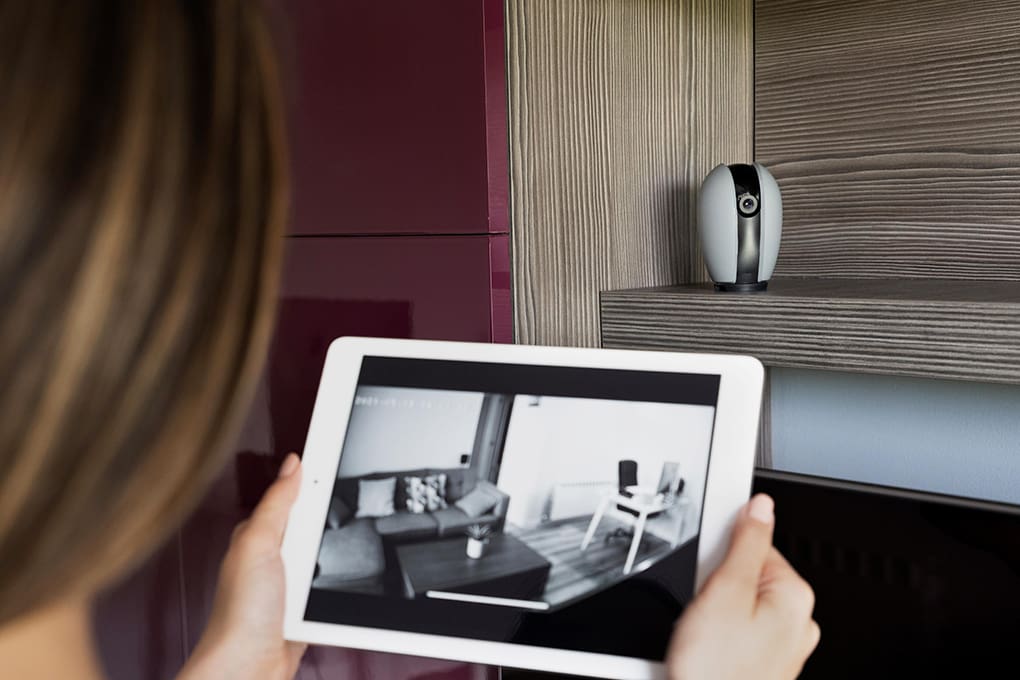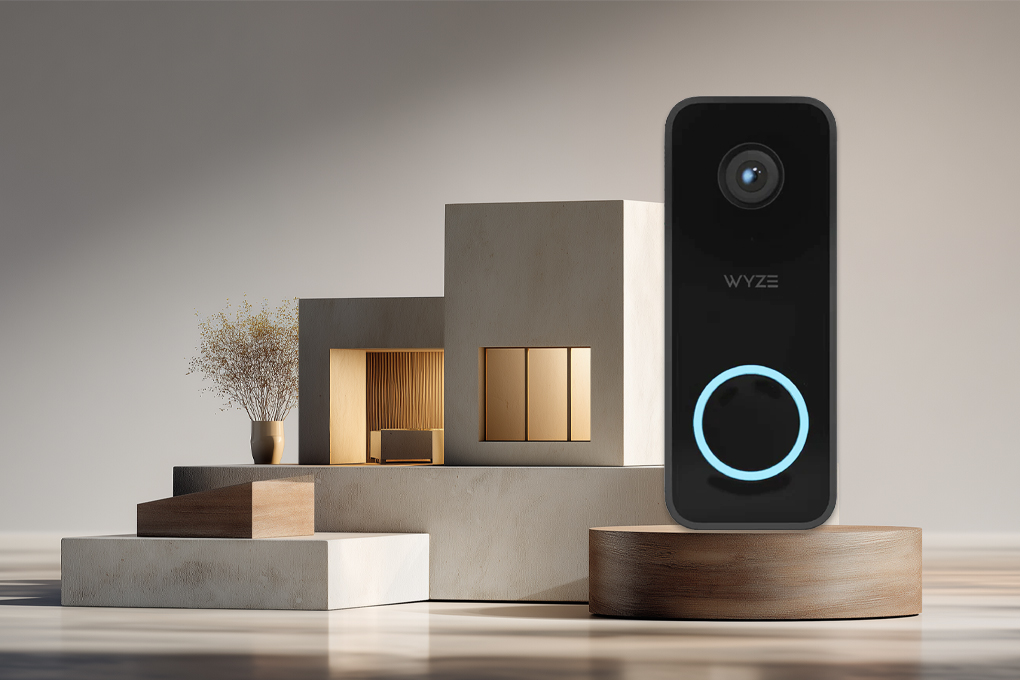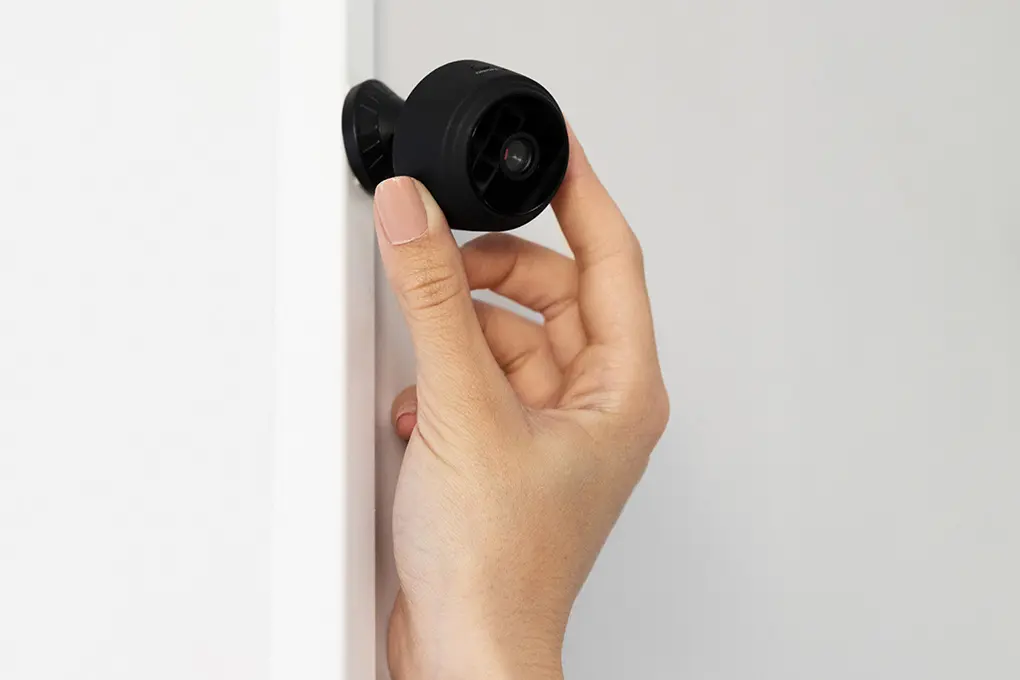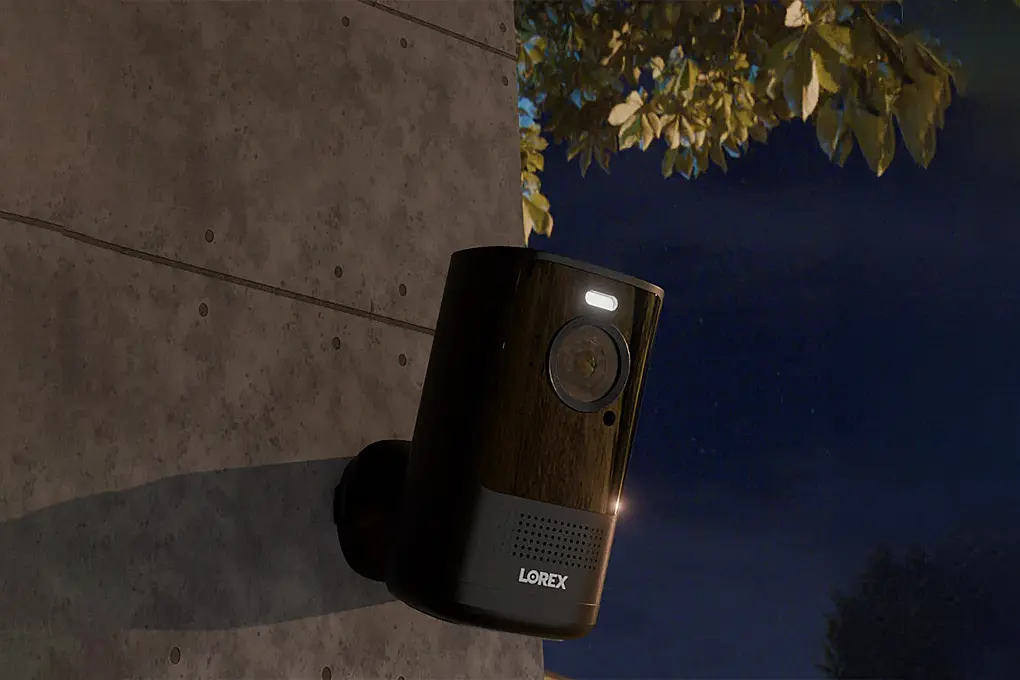Every homeowner thinks, “It won’t happen to me,” until it does. Many years ago, I experienced the terrifying reality of a home invasion firsthand. Coming home to find my personal space violated was deeply unsettling—it shattered my sense of security and left me questioning how to protect myself and my family moving forward.
Unfortunately, my experience isn’t uncommon. Burglaries and break-ins remain distressingly prevalent across the United States:
- 2.5 million burglaries occur annually in the U.S.
- A burglary takes place every 30 seconds.
- A majority of these incidents happen during daylight hours.
- 75% of residential burglaries occur when homes are unoccupied.
- However, according to the U.S. Department of Justice, a household member is home in 28% of burglaries, and alarmingly, 7% of these cases involve violence against the occupant.
- The front door is the most common entry point, accounting for 34% of forced entries, followed by first-floor windows (23%) and back doors (22%).
- Homes without security systems are 300% more likely to be burglarized.
- Only 12.1% of home invasions reported to the police are solved.
Since my own experience, having a security system has been non-negotiable. Yet, choosing between a DIY setup or professional 24/7 monitoring was surprisingly challenging. Budget, convenience, and peace of mind each played significant roles in my decision.
So, do I really need monitoring?
Table of Contents
- Key Takeaways
- What Exactly Is Professional Monitoring?
- Self-Monitoring: The DIY Approach
- Cost Comparison: Professional vs. DIY Monitoring
- When Professional Monitoring Makes Sense
- When Self-Monitoring Is Sufficient
- DIY vs. Professional Home Security Monitoring Comparison at a Glance
- Hybrid Approaches: Getting the Best of Both Worlds
- Making Your Decision: Key Questions to Ask Yourself
- The Reality of Response Times: What to Expect
- The Mental Load Factor: An Often Overlooked Consideration
- Recommendations Based on Household Types
- Why I Prefer Monitored Security Systems
- Final Thoughts: Security Is Personal
- Frequently Asked Questions
Key Takeaways
- Professional monitoring offers 24/7 emergency response even when you’re unavailable, making it ideal for travelers, families, and high-risk homes.
- Self-monitoring is affordable and effective for tech-savvy users in low-crime areas who can consistently check alerts.
- Professionally monitored homes are far less likely to be targeted due to visible deterrents and guaranteed police response.
- The mental load of self-monitoring can cause stress, especially if you’re unable to respond during an emergency.
- Hybrid options like on-demand or friends-and-family monitoring offer flexibility without full-time costs.
- Insurance discounts for professional systems can offset monthly monitoring fees over time.
- Choosing between DIY and professional monitoring depends on your lifestyle, tech skills, and risk tolerance.
What Exactly Is Professional Monitoring?
Professional monitoring means your security system is connected to a monitoring center staffed by trained specialists who respond when your alarm triggers. Unlike self-monitoring (where alerts only go to your phone), professional monitoring centers operate 24/7/365 and follow established protocols when an alarm occurs.
Here’s how monitored systems work:
- When your alarm triggers, the monitoring center typically calls you first to verify it’s not a false alarm.
- If they can’t reach you or if you confirm there’s an emergency, they dispatch appropriate emergency services, including police for a break-in, fire department for smoke detection, or medical services for a panic button press. This happens even if you’re asleep, in a meeting, on a plane, or in an area with poor cell reception.
- The monitoring center stays on the line with emergency responders until they arrive, providing them with critical information about the nature of the emergency and access details to your property.
- Most centers also maintain detailed records of every alert and response for insurance and verification purposes.
Professional monitoring provides a crucial safety net for situations where you might not be able to respond yourself.
This deterrent effect comes partly from the yard signs and window stickers that advertise professional monitoring and partly from the guaranteed response they provide.
According to a recent survey from the Electronic Security Association, 83% of burglars try to determine if a home has a monitored security system before entering. This means that a monitored security system with visible deterrents effectively keeps criminals out of your home.
Self-Monitoring: The DIY Approach
Self-monitoring puts you in charge of emergency response. When an alarm triggers, notifications are sent directly to your smartphone (and perhaps family members’ phones too) through the security system’s app.
Here’s how it works:
- With self-monitoring, you’ll receive real-time alerts when activity is detected.
- Most modern systems send push notifications that include video clips, allowing you to immediately see what triggered the alarm.
- You can then decide whether to call emergency services, contact a neighbor, or dismiss the alert as a false alarm.
Self-monitoring typically comes with no monthly fees beyond what you might pay for cloud storage of video clips. This makes it significantly less expensive than professional monitoring, which often costs $15 to $50 per month depending on features and provider.
The effectiveness of self-monitoring, however, depends entirely on your ability to receive and respond to alerts. If you’re in an important meeting, sleeping, traveling in an area with poor reception, or simply miss the notification, no action will be taken during a real emergency.
To put this in perspective, of the nearly 108 million households in the USA with internet access, 10.8 million have DIY security systems, compared to the over 30 million with professionally monitored services.
Cost Comparison: Professional vs. DIY Monitoring
The most obvious difference between these two approaches is cost:
Professional monitoring generally ranges from $15 to $50 per month, depending on the company and level of service. Basic plans typically cover intrusion detection, while premium tiers might include video verification, fire monitoring, and medical alert response.
Over a five-year period, this adds up to $900 to $3,000 in monitoring fees, not insignificant for budget-conscious households.
DIY monitoring, by contrast, typically has no recurring monthly fee for basic functionality. You purchase the equipment and monitor it yourself through a free app. Some systems charge for expanded cloud storage of video clips (usually $3 to $10 per month), but this is optional and significantly less than professional monitoring costs.
When evaluating costs, it’s important to factor in potential insurance discounts. Many homeowners insurance providers offer discounts of 5% to 20% for professionally monitored security systems, which can offset some of the monthly fee. These discounts rarely apply to self-monitored systems.
When Professional Monitoring Makes Sense
Despite the higher cost, professional monitoring offers distinct advantages in several scenarios, including for those who travel frequently, for families with vulnerable individuals, and homeowners with high-value assets.
Frequent Travel
If you travel frequently, professional monitoring ensures your home remains protected even when you’re unavailable. According to the Bureau of Justice, 72.4% of burglaries occur when no one is home, making continuous coverage particularly valuable for frequent travelers worried about thieves and squatters.
Vulnerable Family Members
For families with young children, elderly parents, or individuals with medical conditions, professional monitoring provides extra protection for those who might need emergency assistance but cannot call for help themselves. Many professional monitoring services include medical alert capabilities that can dispatch ambulances during health emergencies.
High-Value Assets
Homeowners with high-value assets might find professional monitoring’s enhanced protection and faster response times justifies the cost. The average burglary results in approximately $2,661 in property loss according to FBI statistics, which can make prevention through professional monitoring a sound financial decision.
For Busy Lifestyles
Those with busy lifestyles or high-stress jobs might appreciate the peace of mind that comes with knowing their home is always being watched, even when they’re too distracted or unavailable to check alerts themselves.
When Self-Monitoring Is Sufficient
Self-monitoring can be an effective and economical choice in many situations, such as for tech-savvy homeowners, those in low-crime neighborhoods, and budget-conscious homeowners.
Tech-Savvy Homeowners
Self-monitoring can provide adequate protection without monthly fees for tech-savvy homeowners who are consistently connected to their smartphones and available to respond to alerts. This approach works particularly well if multiple household members can receive and respond to alerts, creating redundancy in your response system.
Low-Crime Neighborhoods
Those living in low-crime neighborhoods might find self-monitoring provides an appropriate level of security given their reduced risk profile. According to SafeWise’s State of Safety report, 41% of Americans feel safe in their neighborhoods, suggesting that for many people, the baseline deterrent effect of visible security equipment might be sufficient.
Renters
Renters or those planning to move soon often prefer self-monitoring because it doesn’t require long-term contracts and the equipment can easily move with you. Most professionally monitored systems require minimum commitments of 1-3 years, which may not be ideal for those with changing living situations.
Budget-Conscious Homeowners
Budget-conscious homeowners who want basic security without ongoing expenses might find self-monitoring fits their financial priorities better. The money saved on monitoring fees can instead be invested in higher-quality equipment or additional security measures like better locks, lighting, or reinforced doors.
DIY vs. Professional Home Security Monitoring Comparison at a Glance
| Feature | Professional Monitoring | DIY Self-Monitoring |
| Emergency Response | Handled by 24/7 monitoring center | User must manually respond to alerts |
| Coverage | Always active, even if you’re unavailable | Only works if you see and act on alerts |
| Cost | $15–$50/month; $900–$3,000 over 5 years | No monthly fees; optional $3–$10/month for cloud storage |
| Insurance Discounts | Often qualifies for 5%–20% discount | Rarely qualifies |
| Equipment | Often bundled or added to plan | Purchased upfront; typically more customizable |
| Setup Complexity | Professional or semi-guided setup | DIY setup required |
| Response Time | Monitoring center typically reacts within 30–60 seconds | Varies based on how quickly you notice and act |
| False Alarm Management | Verified through call before dispatch | You must evaluate and decide what action to take |
| Cellular/Power Backup | Included in most systems | Depends on equipment purchased |
| Police Verification | Often no video confirmation; response may vary by area | Some systems offer live video for faster, verified dispatch |
| Mental Load | Low – professionals handle response and coordination | High – all responsibility is on the user |
| Flexibility | May require contract; fixed monthly cost | Very flexible; easy to move and adapt |
| Ideal For | Families, frequent travelers, high-value homes, vulnerable individuals | Tech-savvy users, renters, budget-conscious homeowners, low-crime neighborhoods |
| Customization | Response protocols are set by provider | Full control over alert settings and who gets notified |
| Peace of Mind | High – always covered, even if unavailable | Depends on your availability, connectivity, and tech comfort |
Hybrid Approaches: Getting the Best of Both Worlds
Interestingly, the home security industry has begun offering flexible options that bridge the gap between traditional professional monitoring and pure DIY approaches.
On-Demand Monitoring
On-demand monitoring allows you to activate professional monitoring services only when needed, such as during vacations or business trips. Companies like SimpliSafe and Abode offer no-contract monitoring that can be purchased for as little as one month at a time.
Friends and Family Monitoring Networks
Some providers now offer “friends and family” monitoring networks where your alerts go to designated contacts who can check on your home if you’re unavailable. This creates a layer of human verification without professional monitoring costs.
Video Verification Services
Video verification services have emerged as a middle ground, where monitoring centers can access your camera feeds during an alarm to verify a break-in before dispatching police. This reduces false alarms while still providing professional oversight during emergencies.
Systems that offer both options give you the flexibility to start with self-monitoring and upgrade to professional services if your needs change. Many of today’s best security systems, including Ring Alarm, SimpliSafe, and Abode, allow you to switch between monitoring approaches without changing equipment.
Making Your Decision: Key Questions to Ask Yourself
To determine which monitoring approach is right for your specific situation, consider these questions:
- How Reliable Is Your Internet and Cellular Connectivity? Professional monitoring typically uses cellular backup, ensuring your system works even during power or internet outages. If you live in an area with spotty service, self-monitoring might leave you vulnerable during connectivity problems.
- How Consistent Is Your Availability to Respond to Alerts? If you’re regularly in meetings, traveling to areas with poor reception, or simply a sound sleeper, there will be windows of time when you cannot effectively self-monitor.
- What’s Your Comfort Level With Technology? Self-monitoring requires comfort with smartphone apps and the ability to troubleshoot technical issues. If technology isn’t your strong suit, professional monitoring might provide more reliable protection.
- How Valuable Is Your Peace of Mind? While difficult to quantify, the psychological benefit of knowing professionals are watching your home 24/7 has real value for many homeowners.
- Are There Specific Risks or Vulnerabilities in Your Home? Homes in remote locations, properties with high-value contents, or residences with vulnerable individuals might benefit more from professional monitoring’s guaranteed response.
The Reality of Response Times: What to Expect
When evaluating monitoring options, it’s important to understand how response times work in reality:
With professional monitoring, the monitoring center typically responds to alarms within 30 to 60 seconds. However, the time between their call to emergency services and actual arrival at your home depends entirely on local response capabilities and priorities. In urban areas, police response times for verified alarms average seven to ten minutes, while rural areas may see much longer waits.
That said, in many urban areas, the time it takes for a pair of police officers to physically respond to an alarm can be up to 20 minutes on average.
Self-monitoring response time depends on when you notice the alert and how quickly you can verify and respond to it. If you see an alert immediately, you might be able to call authorities faster than a monitoring center could. However, if you miss the notification or are unavailable, there might be no response at all. In fact, many police departments in cities across the USA now require some form of verification that an alarm is not false before responding.
It’s worth noting that many police departments prioritize verified alarms—those confirmed by video evidence or eyewitness accounts—due to high false alarm rates.
Some jurisdictions have even implemented verified response policies that require confirmation before dispatching officers to alarm calls. This means a self-monitored system with camera verification might actually receive faster police response than a professionally monitored system without verification in certain areas.
The Mental Load Factor: An Often Overlooked Consideration
One factor that rarely appears in direct cost comparisons is the mental load of self-monitoring:
Self-monitoring places the responsibility of emergency response entirely on your shoulders. Every alert requires your attention and decision-making, which can create anxiety and stress, especially during false alarms or when you’re unavailable to check notifications immediately.
Professional monitoring, on the other hand, distributes this responsibility to trained specialists. While you’ll still receive notifications, you’re not solely responsible for emergency response decisions. This reduction in mental load is a significant but often undervalued benefit of professional monitoring.
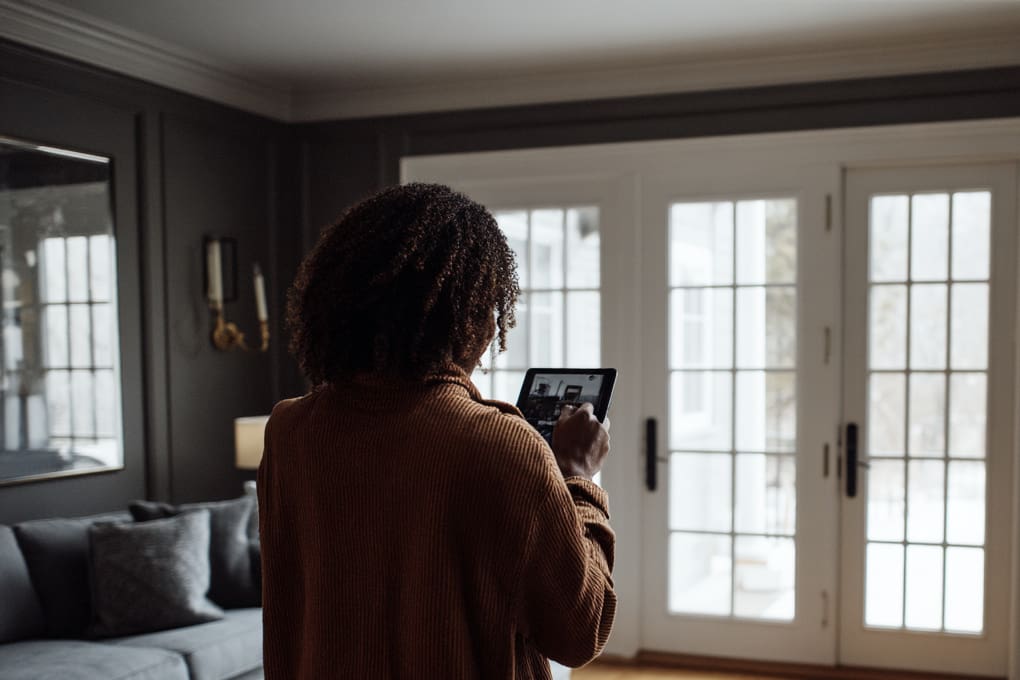
Recommendations Based on Household Types
Based on the factors we’ve discussed, here are some general recommendations for different household situations:
Vulnerable Parties
For families with young children, elderly dependents, or individuals with medical conditions, professional monitoring often provides the most comprehensive protection by ensuring emergency response even when you cannot call for help yourself.
Single-Person Households
Single-person households might benefit most from professional monitoring since there’s no backup person to respond to alerts when you’re unavailable. The Ring 8-piece Home Security System offers affordable professional monitoring with excellent mobile app capabilities.
Multi-Adult Households
Multi-adult households with tech-savvy residents might find self-monitoring sufficient, especially if household members have varying schedules, creating natural coverage throughout the day and night. Don’t forget that the right security system can decrease your insurance rates too!
Frequent Travelers
Frequent travelers should strongly consider professional monitoring or, at minimum, on-demand monitoring during trips. The last thing you need while away is to receive an alert you cannot act upon from thousands of miles away.
Those in High-Crime Areas
Homeowners in high-crime areas generally benefit from professional monitoring’s deterrent effect and guaranteed response. Statistics consistently show that professionally monitored homes are targeted less frequently, likely because criminals recognize the increased risk of apprehension.
Why I Prefer Monitored Security Systems
When I first installed a home security system, I chose a DIY setup. The appeal was obvious—no contracts, lower upfront cost, and full control through my smartphone. It worked well for a while. I’d get real-time alerts, check video clips, and decide whether to act.
But over time, I realized how often I wasn’t able to respond. Meetings, sleep, travel—there were too many gaps where I simply couldn’t check my phone. The thought of something happening while I was offline started weighing on me.
What really shifted my mindset was learning how response times work. Many police departments now prioritize verified alarms, and DIY systems without video confirmation can be delayed or ignored. I needed something more reliable.
That’s when I switched to a professionally monitored system. The difference was immediate. Knowing that trained professionals were watching 24/7 gave me peace of mind I didn’t know I was missing.
Now, if my alarm triggers and I’m unavailable, the monitoring center steps in, verifying the threat and dispatching police without me lifting a finger. I also appreciate that my system includes cellular backup and battery power, so it works even if the Wi-Fi goes down.
Most importantly, I sleep better at night. I no longer carry the burden of being my own emergency response team. DIY was a great start, but professional monitoring offers the security and peace of mind I truly needed.
Final Thoughts: Security Is Personal
The choice between professional and self-monitoring ultimately comes down to your specific circumstances, budget, and peace of mind. There’s no universally “right” answer, just the approach that best fits your needs.
Many security experts recommend starting with a flexible system that allows for both approaches. This gives you the freedom to try self-monitoring initially and upgrade to professional services if you find the responsibility too burdensome or discover gaps in your coverage.
The best security solution is one that adapts with you, providing the right level of protection for your current situation without unnecessary features or costs.
Want to find the right balance of security and value for your home? Browse Batten’s expert-recommended home security systems and start protecting what matters most with confidence.
Frequently Asked Questions
Can I Switch From Self-Monitoring to Professional Later?
Yes, many systems like SimpliSafe and Abode let you upgrade to professional monitoring without changing equipment.
Do Professional Monitoring Centers Work During Power Outages?
Most professional systems use battery backup and cellular connections, so they remain active during power or internet outages.
Does Self-Monitoring Still Deter Criminals?
Yes, visible cameras and alarm signage can still deter burglars, especially when paired with smart alerts and lights.
Is Professional Monitoring Worth It for Apartments?
Yes, especially for ground-floor or easily accessible units, professional monitoring adds peace of mind and extra protection.
How Can I Verify a Break-in Myself With DIY Monitoring?
Look for systems that send video clips or allow live view access when motion is detected, helping confirm threats quickly.
Sources
- How Many Home Invasions Happen Per Year In The U.S.? 13+ Burglary Statistics
- Home | Bureau of Justice Statistics
- 10 New Crime Statistics You Need to Know | ProTech Security: Home and Business Security Solutions | Northeast Ohio and Central Florida Security Systems10 New Crime Statistics You Need to Know | ProTech Security
- How Often do Burglaries Happen in the U.S.? – Kami Home News
- How Do Burglars Target Homes? 15+ Ways to Help Keep Your Home Safe
- Crime in the U.S.: Key questions answered | Pew Research Center
- Deter Crime at Home with a Blend of Security Measures – ESA
- Home Security Statistics 2025 | ConsumerAffairs®
- 15-1498-1.pdf
- FBI — Burglary
- Some Cities Are Requiring Alarm Verification for Response – What It Means for the Security Industry – Security Industry Association
- Burglary reduction and improved police performance through private alarm response – ScienceDirect
